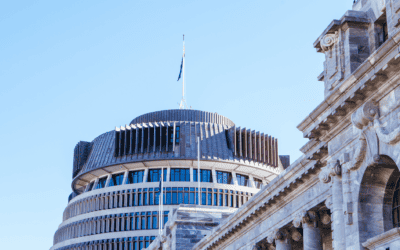Over one billion people worldwide have no access to electricity while less than 10% of the energy used globally is being generated from renewable sources. Both figures are highly alarming, writes Cooperative Business New Zealand CEO, Craig Presland. Despite the quest globally to develop and utilise renewable energy, we still have almost 90% generated by the burning of fossil fuels (33% by oil, 30% by coal and 24% by natural gas). Solar energy provides a viable solution to both problems, Craig says, while current solar energy generation globally is shown below:
Of those with no access to electricity, most live in Africa, Asia and Latin America. That’s almost one-seventh of the world’s population. In addition, there are hundreds of millions more whose heating and lighting are being provided by a combination of coal, kerosene, diesel, wood and candles. These sources of energy are unreliable, unhealthy, inadequate, unsustainable and often expensive.
In New Zealand, we currently have an estimated 82% of our electricity generated from renewable sources which is impressive. This includes 63% from hydro and the remainder from geothermal and, increasingly, wind energy. While we are one of the world’s lowest carbon dioxide-emitting countries in terms of electricity generation, we see a big opportunity, both globally and locally, in developing community solar energy co-operatives that provide electricity through mini-grids, as well as installations directly into homes and commercial buildings.
Although solar power currently only generates around 1.0% of New Zealand’s total energy, the installation of solar panels on the roofs of residential homes is rising rapidly. An Australian-based group of co-ops, Energy Democracy, is planning on building a solar energy park in Carterton, Wairarapa (pictured) in the near future.
Almost every nation has made a commitment through the United Nations Paris Agreement to significantly cut back by 2030 on its use of energy sources that emit carbon dioxide into the atmosphere. We note, however, that the Trump administration is planning to withdraw the United States from the agreement in January 2020. These same countries have made commitments through the UN’s Sustainable Development Goals programme to dramatically improve the quality of life around the world by 2030, see Goal No. 7: Affordable and Clean Energy, this includes “access to affordable, reliable, sustainable and modern energy for all.”
There are many ways in which universal access to electricity will improve the quality of people’s lives. These include: creating job opportunities; reducing the workload of women by saving, on average, an hour a day that is currently spent searching for firewood; and preventing almost two million premature deaths per year from household air pollution. There would also be a net reduction in greenhouse-gas emissions because of the lower use of biomass fuel for cooking, and the virtual elimination of kerosene and other dirty fuels as sources of heat and light.
How can the ambitious goal of “electricity for all” be realised?
The broad answer is to dramatically increase the use of decentralised, renewable energy to meet the world’s unmet and under-met needs for electricity. Since most people without electricity do not have access to transmission lines, the most feasible approach to providing them with electricity is through community solar mini-grids and single building installations.
Many of these could be organised as cooperatives with the members of the cooperatives being the homeowners (users), democratically run businesses with all financial benefits provided to members and not outside investors.
Recent and projected progress in electrification
According to the World Energy Outlook reports of 2017 and 2018, there has been a pattern since 2000 of accelerating access to electricity for unserved and underserved populations. While we still have almost one billion people without electricity, that’s a marked improvement over the 1.7 billion without access in 2000. Unfortunately, during this time period, the “vast majority (97%) of new electricity connections” was through primarily fossil-fuel-based grid extensions, and less than 1% of new electricity access was provided via decentralised, renewable energy systems.
On the bright side, the 2017 report goes on to say that between 2018 and 2030, fossil fuels will largely be replaced by renewable energy – especially solar energy – as the primary source of electricity:
“The rapidly declining costs of solar PV [photovoltaics], battery technologies, and energy-efficient appliances (especially light-emitting diode [LED] lighting) are making decentralised renewable energy systems more affordable. This is particularly the case for rural and dispersed communities not served by the main grid and where it may take years for one to arrive. Decentralised systems can also be attractive in areas with grid access but an unreliable power supply.”
Growth of solar and other renewable sources of electrification
There are many exciting renewable-energy options that are becoming increasingly available to rapidly expand the electrification of the world. For example, large solar arrays are being developed across northern Africa that could eventually replace much of the remaining fossil-fuel energy in Europe. One analyst estimates that putting solar panels on 2% of the Sahara Desert could meet all of the world’s electricity needs. Building underwater transmission cables from Northern Africa to Europe is certainly feasible. There are other examples of desert-based, large-scale solar projects in Saudi Arabia, China, the Navajo reservation in the United States, and elsewhere. Together, these systems are likely to provide a huge addition to affordable, renewable energy by 2030.
Wind turbines also provide a critical part of any future mix of renewable energy sources. They are certainly on the rise in New Zealand and currently generate around 5.2% of the electricity supply. Because of the intermittent generation of electricity by both solar and wind installations, they must be supplemented by other sources of energy, energy storage, and/or long-distance transmission. Lithium-ion batteries and other means of storage are an important and increasingly cost-effective way to expand the use of renewable energy at every level, from individual buildings to large power plants.
Advantages of, and challenges to, community solar co-ops
Listed below are the advantages of, and challenges to, community solar co-ops as a means to rapidly expanding electrical services in developing countries:
Advantages
- They are relatively inexpensive to install and operate.
- They can serve people who live in remote areas.
- They can be rapidly ramped up.
- As mini-grids and clusters of single building installations, they can operate independently of large-scale transmission grids.
- Panels and other components are easy to transport, install, and maintain.
- Decisions are made by locally elected boards, profits are retained locally.
- They generate jobs and new business activities.
- They improve the quality of everyday life, health and wellbeing.
Challenges
- There is a shortage of champions for solar community cooperatives in the international community.
- Even though they can operate self-sufficiently once formed, there are difficulties in accessing start-up capital for them.
- There is often a lack of local expertise in sourcing materials, setting up local systems, and providing ongoing monitoring and support services.
Despite the success of community solar co-ops in some developing countries, there is not nearly enough support for expanding this approach to help meet the goal of universal access to electricity by 2030. Three of the co-op entities in the best position to promote and assist community solar co-op projects are the International Co-operative Alliance, the US-based National Rural Electric Cooperative Association, and the World Council of Credit Unions – which could advocate strongly for community solar co-ops by encouraging and assisting credit unions, savings and credit cooperative organisations, and other financial cooperatives around the world to provide financing for these co-ops.
From a historical perspective, it is useful to look at the rural electric cooperative movement in the United States. In addition to the strong demand for electricity by rural residents, the second biggest factor setting the stage for the rapid growth of these co-ops in the 1930s and 1940s was the provision of low-interest loans by the Rural Electrification Administration (REA) established by the Roosevelt administration in the mid-1930s. Today, about 1,000 rural electric co-ops provide electricity to 40 million people in rural and suburban communities throughout the United States. Similar loan programmes, both national and international, could be established during the next decade to accelerate electrification in developing countries.
Affordability and cost savings here in New Zealand (residential)
While solar power generation in New Zealand is on the rise, it operates in an entirely free market with no form of subsidies or intervention from our Government. As of January 2019, New Zealand had 90.1 MW of installed photovoltaic (PV) solar power, equating to only 1.04% of total energy usage.
The cost to install solar panels on an average-sized home in New Zealand ranges from $10,000 to $15,000 while the estimated cost saving is around half of the annual kw usage (4,800 units / 10,000 units for a family of four, May month so in between summer and winter usage, no natural gas supplementary usage).
With an estimated power bill of $200 to $250 per month, excluding any supplementation from natural gas, and an annual cost of $3,000, the saving would be just under $1,500 pa giving a payback period of between seven and ten years (all figures include GST). Consumers obviously need to be thinking long-term when considering the financial benefits, however what about the favourable environmental impact of solar?
While 82% of our electricity is currently being generated from renewable sources, what about the rest that is generated by coal, oil and natural gas? In addition, and more importantly, what about reducing our direct usage of natural gas to supplement our electricity usage?
A large community-owned solar energy park capable of powering 300 homes is proposed to be built in Tauranga by the Australian-based company Energy Democracy. Thousands of solar panels generating 1.5 megawatts would charge a battery the size of a shipping container, with the power released into the national grid when the price was right. The $6 million project covers three hectares and was being promoted by, and chaired, by former Tauranga resident Shelley Major.
The concept behind the co-operative is to assist communities to access clean, renewable energy where they do not have the capacity to generate it themselves. By investing a few thousand dollars upfront, members get access to the electricity generated and also have the option to sell back to the grid. Returns would be maximised by selling when prices were higher and recharging the battery when prices were lower. A key to the feasibility of the solar park was finding cheap land.
Tauranga was the second New Zealand local council to be approached by Major, with Carterton District Council also considering options to lease land to Energy Democracy. The solar parks would be owned by community co-operatives consisting of up to 1,000 members investing a maximum of $9,000 each. Members of the co-operative would own the generating assets and battery storage, with Energy Democracy building and managing the park. Members would still draw their power from the national grid and pay regulated fees to access their electricity, but their share of the surpluses from the solar park would, in effect, offset their power bills.
Shelley Major reports: “The growth in small-scale solar is what is driving the transition in the electricity sector globally into a clean, local and digital energy system. Individual households, and in Energy Democracy’s case communities of households, are generating a significant portion of their electricity needs for themselves. The challenge is to ensure everyone in the community is able to participate in and benefit from, this transition”.
The time is now
Community solar cooperatives are already in place in some developing countries and could be expanded rapidly to provide electricity in many more. However, unless the expansion of these co-ops becomes a much higher priority of the international cooperative community and of international development organisations, the huge potential for these local, renewable energy providers will not be realised.
Here in New Zealand, as well as globally, we have a real opportunity to further develop solar energy generation utilising the cooperative business model, based on member ownership (as opposed to investor ownership) which is the ideal vehicle to do this.
Such co-ops would be democratically run, voluntary and open membership, economic benefits (rebates) provided each year on the basis of annual usage (with profits retained locally), autonomous and independent. Funds would be set aside for future expansions and growth along with investment into local communities – all strong co-op principles.
Craig Presland
CEO, Cooperative Business New Zealand
23rd May 2019



